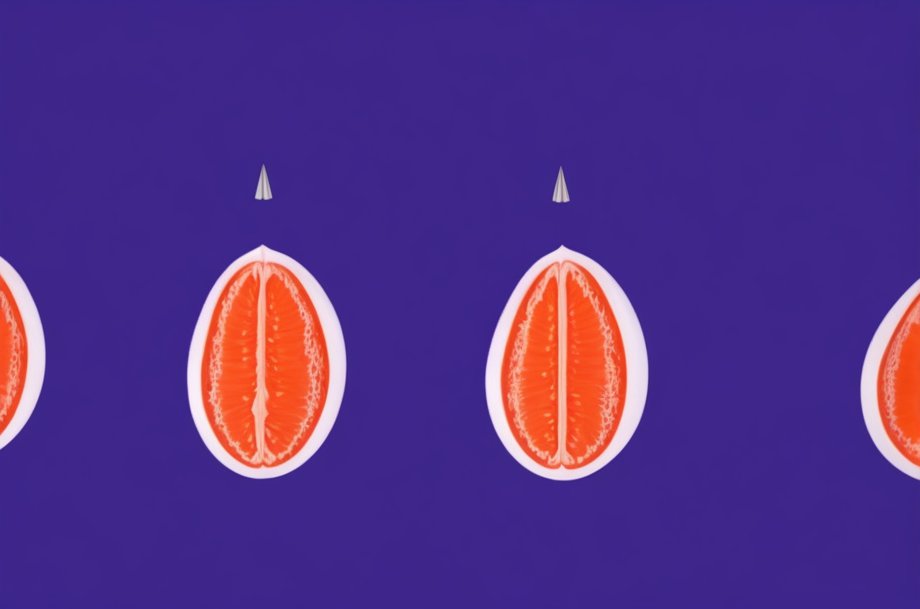What Is Woman Genital Mutilation (FGM) Prevalence and Advocacy

In a world that champions gender equality and the empowerment of women, it is ironic that the practice of Female Genital Mutilation (FGM) still persists.
This article delves into the prevalence of FGM globally and the advocacy efforts aimed at eradicating this harmful practice. By examining its historical context, health consequences, cultural perspectives, legal frameworks, and community engagement, we aim to shed light on the urgent need for action and strategies to protect the rights and well-being of women worldwide.
Key Takeaways
- FGM has deep cultural and religious roots and has been practiced for thousands of years, with the belief that it controls women’s sexuality and maintains purity.
- Countries in sub-Saharan Africa, such as Somalia and Guinea, have high prevalence rates of FGM, and targeted interventions are needed to combat the practice in these regions.
- FGM has significant health consequences, including increased risk of complications during childbirth, infertility, reproductive tract infections, and psychological effects such as PTSD and depression.
- International legal frameworks have raised awareness about the harmful effects of FGM, and many countries have enacted laws criminalizing the practice, but enforcement remains a challenge due to cultural and social norms. Community engagement and education programs are crucial for addressing FGM and protecting women’s rights.
Historical Context: Understanding the Origins of FGM
In order to fully comprehend the prevalence and advocacy of Female Genital Mutilation (FGM) today, it is imperative to delve into the historical context and understand the origins of this harmful practice.
FGM has deep roots in various cultural, religious, and social traditions, primarily in Africa, the Middle East, and some parts of Asia. Its origins can be traced back thousands of years, where it was believed to control women’s sexuality, maintain purity, and preserve cultural identity. Historical records indicate that FGM predates the rise of major religions and was practiced in ancient civilizations.
However, it is important to note that FGM is not exclusive to any particular religion and is often performed in both Muslim and non-Muslim communities. Understanding the historical context of FGM is crucial in order to address this issue effectively and work towards its eradication.
Global Prevalence: Mapping the Extent of FGM
The global prevalence of female genital mutilation (FGM) is a pressing issue that needs to be addressed.
Mapping the extent of FGM allows us to identify regional hotspots where this harmful practice is most prevalent.
Regional Hotspots of FGM
Various countries in sub-Saharan Africa, such as Somalia and Guinea, have been identified as regional hotspots of FGM, where the practice remains prevalent despite ongoing efforts for its eradication. FGM prevalence rates in these countries are alarmingly high, with estimates suggesting that over 90% of women have undergone the procedure.
Regional variations in FGM exist, with some areas having lower rates due to successful advocacy and awareness campaigns. However, cultural and societal factors continue to perpetuate the practice in hotspots, where it is deeply rooted in tradition and customs.
The persistence of FGM in these regions underscores the need for targeted interventions that address the underlying social norms and beliefs that sustain the practice. Education, community engagement, and comprehensive healthcare services are crucial in combating FGM and protecting the rights and well-being of women and girls affected by this harmful practice.
Cultural and Religious Influences
Cultural and religious influences significantly contribute to the global prevalence of female genital mutilation, as they serve as important factors in perpetuating this harmful practice. Cultural beliefs and societal pressures play a crucial role in shaping the mindset and behavior of communities where FGM is practiced. These influences often reinforce the notion that FGM is necessary for preserving female purity, ensuring marriageability, and upholding cultural traditions.
To further understand the cultural and religious influences on FGM, the following table highlights some key factors:
| Cultural Beliefs | Societal Pressures | Religious Justifications |
|---|---|---|
| Preserving purity | Ensuring marriageability | Misinterpretation of religious texts |
| Upholding traditions | Gender roles | Cultural obligation |
| Community acceptance | Social status | Cultural identity |
These factors contribute to the perpetuation of FGM, making it challenging to eradicate the practice. However, it is crucial to address these cultural and religious influences to protect the rights and well-being of women and girls. Understanding the impact of FGM on women’s health is the next vital step in this discussion.
Impact on Women’s Health
Examining the worldwide prevalence of female genital mutilation (FGM) is crucial in understanding the extensive impact this harmful practice has on women’s health. FGM, a deeply rooted cultural and traditional practice, affects millions of women and girls worldwide. The consequences of FGM are far-reaching, with significant implications for reproductive health and long-term psychological well-being.
Key impacts on reproductive health include:
- Increased risk of complications during childbirth, such as obstetric fistula and prolonged labor.
- Infertility and reproductive tract infections due to scar tissue formation and infections.
- Painful and difficult menstruation, urinary problems, and sexual dysfunction.
Furthermore, FGM has profound long-term psychological effects on survivors, including:
- Post-traumatic stress disorder (PTSD) and anxiety.
- Depression and feelings of shame and low self-esteem.
- Difficulty forming intimate relationships and experiencing sexual pleasure.
Addressing the impact of FGM on women’s health requires a comprehensive approach that combines medical care, education, and advocacy to eradicate this harmful practice and support the physical and emotional well-being of survivors.
Health Consequences: Unveiling the Physical and Psychological Impact
The article highlights the significant physical and psychological impact of woman genital mutilation (FGM), shedding light on the health consequences associated with this harmful practice. FGM, also known as female circumcision, is a traditional cultural practice that involves the partial or total removal of the external female genitalia. It is commonly performed on girls between infancy and adolescence and is prevalent in many parts of Africa, the Middle East, and Southeast Asia.
The physical trauma caused by FGM can include severe pain, bleeding, infection, urinary problems, and even death. The psychological trauma is equally devastating, with survivors experiencing anxiety, depression, post-traumatic stress disorder (PTSD), and a range of other mental health issues. The table below highlights some of the physical and psychological consequences of FGM:
| Physical Consequences | Psychological Consequences |
|---|---|
| Severe pain | Anxiety |
| Bleeding | Depression |
| Infection | PTSD |
| Urinary problems | Mental health issues |
It is crucial to raise awareness about the physical and psychological impact of FGM and advocate for its elimination. By doing so, we can work towards protecting the health and well-being of women and girls everywhere.
Cultural Perspectives: Examining the Justifications Behind FGM
The practice of female genital mutilation (FGM) is deeply rooted in cultural traditions. It is often seen as a rite of passage or a means of preserving purity and ensuring marriageability. However, these justifications conflict with the basic principles of human rights and the physical and psychological well-being of women.
It is essential to critically analyze these cultural perspectives. By doing so, we can understand the complex dynamics that perpetuate FGM and find effective strategies for eradication.
Cultural Traditions Vs. Human Rights
A significant challenge in addressing the issue of woman genital mutilation (FGM) lies in reconciling cultural traditions with the fundamental principles of human rights. FGM is deeply rooted in certain societies as a cultural practice aimed at preserving tradition and maintaining social norms. However, it is important to recognize that cultural preservation should not come at the expense of violating the basic rights and dignity of women.
FGM perpetuates harmful gender stereotypes and contributes to the subjugation of women. Advocacy efforts should focus on educating communities about the physical and psychological consequences of FGM. Engaging with religious and community leaders can help challenge the social norms that perpetuate FGM.
Addressing FGM requires a delicate balance between respecting cultural diversity and upholding the principles of human rights. It is essential to foster dialogue and promote alternative cultural practices that empower women and girls, ensuring that their rights are protected and their voices are heard.
Impact on Women’s Health
Examining the impact on women’s health, particularly through the lens of cultural perspectives, sheds light on the justifications used to defend the practice of female genital mutilation (FGM).
FGM is a deeply rooted cultural tradition that affects millions of girls and women worldwide. The practice is often justified by claims that it ensures purity, controls female sexuality, and upholds cultural norms and traditions. However, these justifications ignore the severe physical, psychological, and sexual consequences that women experience as a result of FGM.
Gender inequality and social stigma further perpetuate the practice, as women who have not undergone FGM may face discrimination and exclusion from their communities. It is essential to challenge these cultural beliefs and address the underlying issues of gender inequality and social stigma in order to protect women’s health and well-being.
Transitioning into the subsequent section about legal frameworks, assessing international efforts to end FGM highlights the importance of establishing legal protections and enforcement mechanisms.
Legal Frameworks: Assessing International Efforts to End FGM
How effectively are international legal frameworks addressing and evaluating efforts to eradicate Female Genital Mutilation (FGM)? Assessing progress and policy implications play a crucial role in determining the effectiveness of these frameworks.
- Awareness: International legal frameworks have helped raise awareness about the harmful effects of FGM, leading to a global consensus that it is a violation of human rights.
- Legislation: Many countries have enacted laws and policies to criminalize FGM, providing a legal basis for prosecution and protection of girls and women at risk.
- Enforcement: However, enforcement remains a challenge, as cultural and social norms continue to perpetuate the practice in some communities.
To effectively eradicate FGM, it is essential to strengthen monitoring and evaluation mechanisms to assess progress and identify gaps in implementation. This will enable policymakers to develop targeted interventions, allocate resources, and engage with communities to change attitudes and behaviors towards FGM.
Community Engagement: Empowering Local Advocacy and Education
Several community engagement initiatives have empowered local advocacy and education efforts to combat Female Genital Mutilation (FGM). These initiatives have focused on building strong local partnerships and promoting community empowerment to address the issue effectively.
By involving community members, organizations, and local leaders, these initiatives have created a platform for open dialogue, education, and awareness about the harmful effects of FGM. Through collaborative efforts, communities have been able to develop strategies and implement programs that promote the abandonment of this harmful practice.
Local partnerships have been instrumental in providing resources, support, and guidance to those affected by FGM, as well as creating safe spaces for survivors to share their experiences.
Future Outlook: Strategies for Eradicating FGM in the 21st Century
To achieve the eradication of Female Genital Mutilation (FGM) in the 21st century, it is essential to develop comprehensive strategies that prioritize education, community engagement, and international collaboration. FGM is a harmful practice that violates the rights of women and girls, causing severe physical and psychological consequences.
Strategies for prevention should focus on the following:
- Education: Implementing educational programs that raise awareness about the risks and consequences of FGM is crucial. Education empowers individuals to make informed decisions and challenges the deep-rooted beliefs and cultural norms surrounding FGM.
- Community Engagement: Engaging with communities affected by FGM is essential for addressing the practice effectively. Building trust, involving community leaders, and promoting dialogue will help change attitudes and behaviors towards FGM.
- Global Awareness Campaigns: Creating global awareness campaigns to shed light on the issue of FGM is crucial. These campaigns should focus on dispelling myths, promoting human rights, and mobilizing collective action to end FGM worldwide.
Frequently Asked Questions
What Are the Historical Reasons Behind the Practice of Fgm?
The historical significance of female genital mutilation (FGM) lies in cultural norms that have been passed down for generations. These practices, rooted in societal beliefs and traditions, have perpetuated the prevalence of FGM despite growing advocacy against it.
How Does FGM Prevalence Vary Across Different Regions and Countries?
Regional disparities in the prevalence of female genital mutilation (FGM) exist due to various factors. These include cultural norms, religious beliefs, socioeconomic status, education, and legal frameworks. Understanding these influences is crucial for effective advocacy efforts to eradicate FGM.
What Are the Long-Term Physical and Psychological Consequences of Fgm?
Long-term physical and psychological consequences of FGM include chronic pain, infection, fertility issues, childbirth complications, and psychological trauma such as anxiety, depression, and post-traumatic stress disorder. These effects can significantly impact the well-being and quality of life of survivors.
How Do Cultural Beliefs and Traditions Influence the Justification for Fgm?
Cultural perspectives and societal impact play a significant role in the justification of FGM. Beliefs and traditions shape the perception that FGM is necessary for purity, marriageability, and adherence to cultural norms, despite its physical and psychological consequences.
What International Laws and Initiatives Have Been Established to Combat Fgm?
Several international laws and global initiatives have been established to combat Female Genital Mutilation (FGM). These include the United Nations’ Universal Declaration of Human Rights, the Convention on the Elimination of All Forms of Discrimination Against Women, and the Maputo Protocol.










